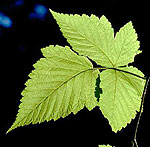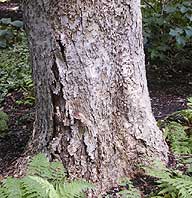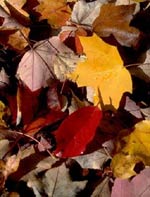 |
 |
 |
| Broad leaves can capture a lot of sunlight for a tree. | Many trees have thick bark to protect against the cold winters in the temperate deciduous forest. | In the autumn, deciduous trees drop their leaves to minimize water loss. |
Temperate Deciduous Forest Plant Adaptations
 |
 |
 |
| Broad leaves can capture a lot of sunlight for a tree. | Many trees have thick bark to protect against the cold winters in the temperate deciduous forest. | In the autumn, deciduous trees drop their leaves to minimize water loss. |
| Disclaimer/Credits | Copyright © 2009 Missouri Botanical Garden |